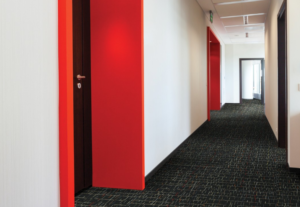The choice between porcelain and ceramic tiles often stands as a significant decision in interior design and construction projects. Both materials offer durability, versatility, and aesthetic appeal, yet they possess distinct characteristics and considerations. This blog post delves into the comparative analysis of porcelain versus ceramic tile flooring, aiming to provide insight into their respective pros and cons for informed decision-making.
Understanding Porcelain and Ceramic Tiles
Porcelain tiles are crafted from fine porcelain clay fired at high temperatures, resulting in a dense and durable material. They exhibit low water absorption, making them highly resistant to moisture and stains. Porcelain tiles come in various designs, including glazed and unglazed varieties, suitable for both indoor and outdoor use.
In contrast, ceramic tiles are made from a mixture of clay, minerals, and water, molded and fired at lower temperatures than porcelain. While less dense, ceramic tiles are still durable and come in diverse colors, patterns, and finishes. They are primarily used indoors, often glazed to enhance appearance and add protection.
Pros and Cons of Porcelain Tile Flooring
Porcelain tiles boast exceptional durability, withstanding heavy foot traffic, scratches, and chipping. Their low water absorption makes them highly resistant to moisture, ideal for areas prone to spills or freezing temperatures. Moreover, porcelain offers versatility in design, with a wide range of options available, and requires minimal maintenance. However, porcelain’s high cost, installation complexity, hardness, and limited design availability may present challenges for some homeowners.
Pros and Cons of Ceramic Tile Flooring
Ceramic tiles offer affordability, ease of installation, and a wide range of styles, making them a popular choice for budget-conscious projects. They exhibit good heat resistance and are environmentally friendly, often made from natural clay minerals and recycled materials. Nonetheless, ceramic tiles have a higher water absorption rate, making them prone to damage in moist environments. They are also susceptible to chips and cracks, require grout maintenance, and are limited in outdoor use.
The choice between porcelain and ceramic tile flooring depends on factors such as budget, design preferences, and intended usage. Porcelain tiles excel in durability, moisture resistance, and design versatility, making them suitable for high-traffic areas and outdoor applications. In contrast, ceramic tiles offer affordability, ease of installation, and a wide range of styles but may require more maintenance and care, particularly in moisture-prone areas. By considering the pros and cons of each option, homeowners and designers can select the ideal flooring solution to enhance the beauty, functionality, and value of their space.
Read next: What are the Most Popular Types of Wood Flooring?



